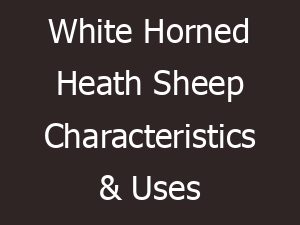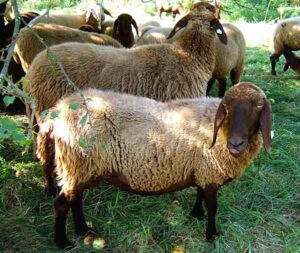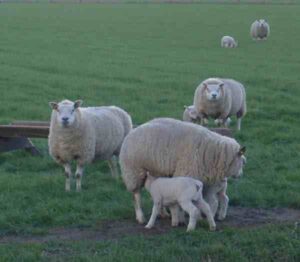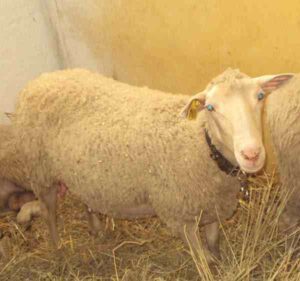The Boreray sheep is a critical breed of sheep which was originated from the St Kilda archipelago off the west coast of Scotland.
And it is surviving as a feral animal on one of the islands of Scotland, Boreray. It has been largely feral since 1930.
And the breed was named from this island. It is also known by some other names such as Hebridean Blackface and Boreray Blackface sheep.
The Boreray sheep breed was actually developed during the late nineteenth century from Scotish Blackface and a Hebridean type of Old Scottish Shortwool.
It is one of the Northern European short-tailed sheep group of breeds. And today, it is the rarest sheep breed in the United Kingdom, and today it is the only breed classed as ‘Category 2: Endangered’ by the Rare Breeds Survival Trust.
And today there are only fewer than 300-500 animals exist. Read some more information about this Scottish sheep breed below.
Boreray Sheep Characteristics
The Boreray sheep are smaller sized animals. Both rams and ewes are usually horned, and formerly sometimes had more than one pair. Their tails are naturally short.
They are generally grey or creamy white in body coloration, although darker individuals occur whose coloring is similar to the Soay sheep.
The legs and face are free of wool and usually black and white with a proportions varying between individuals.
As a smaller sized animal, average live body height of the mature Boreray sheep is around 55 cm.
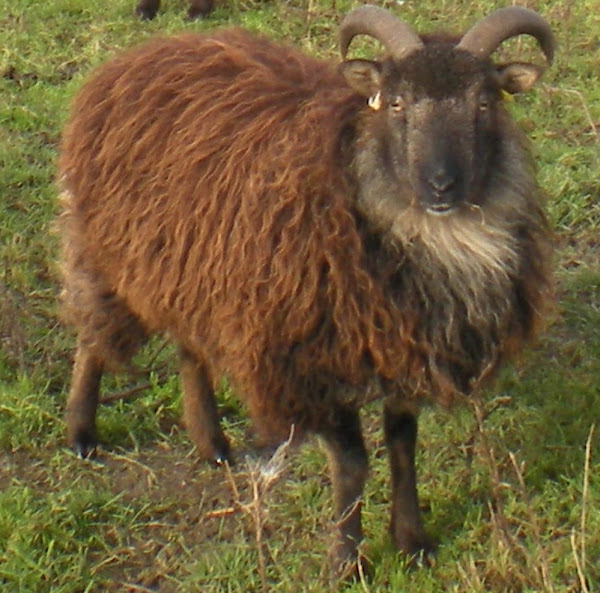
Average live body weight of the mature rams is around 45 kg. And the mature ewe’s average live body weight is around 30 kg. Photo and info from Wikipedia.
Uses
The Boreray sheep are good for both meat and wool production. But they are also good for conservation grazing.
Special Notes
The Boreray sheep is a hardy breed of sheep, and is well adapted to their native climate. They usually do well on sparse grazing and are able to cope with most conditions.
They have a high level of resistance to foot rot and flystrike. They are long lived animals, and the ewes often lamb within their 1.5 years of age.
Average lambing percentage of the Boreray ewes is around 140 percent. They have very few lambing problems and the lambs are smaller in size but lively.
The Boreray sheep were previously raised mainly for meat and wool production.
But they are now raised for conservation purpose mainly due to their rarity. However, review full breed profile of the Boreray sheep in the following chart.
| Breed Name | Boreray |
| Other Names | Known by some other names such as Hebridean Blackface and Boreray Blackface |
| Breed Purpose | Meat, wool and conservation grazing |
| Special Notes | Very hardy and strong animals, well adapted to their native climates, generally do well on sparse grazing and are able to cope with most conditions, have high level of resistance to foot rot and flystrike, long lived animals, the ewes are good mothers and have very few lambing problems, lambs are smaller in size but very lively, previously used mainly for meat and wool production, today the breed is very rare |
| Breed Size | Small |
| Weight | Rams weight around 45 kg, and average live body weight of the mature ewes is around 30 kg |
| Horns | Yes |
| Climate Tolerance | Native climates |
| Color | Generally grey or creamy white or darker |
| Rarity | Rare |
| Country/Place of Origin | Scotland |

